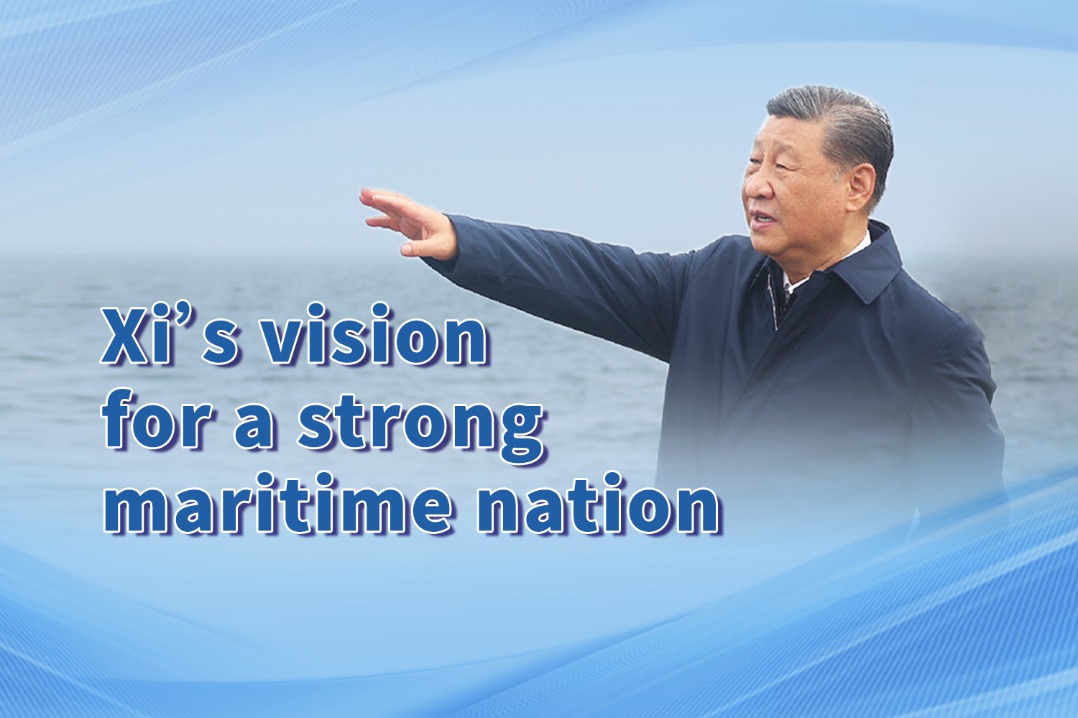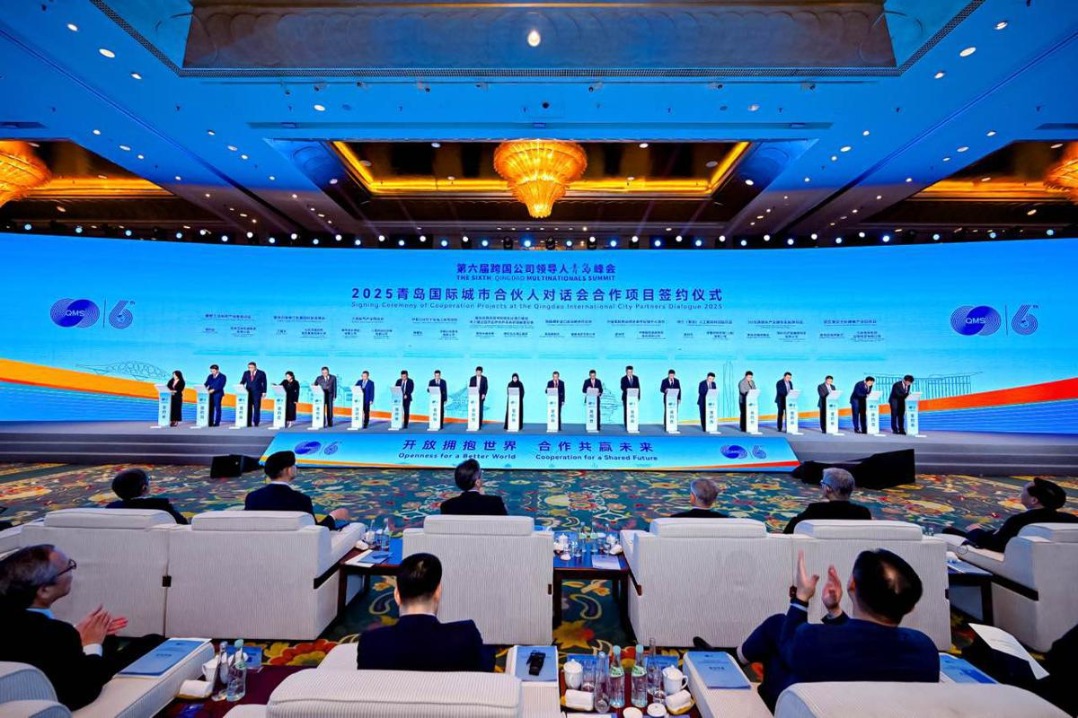Sustainable Development of Transport in China

2. Pursuing Green Development
Acting on the understanding that lucid waters and lush mountains are invaluable assets, China has improved the system for promoting eco-civilization in the transport sector, achieved real results in energy conservation and carbon reduction, and increased environmental friendliness.
Comprehensive energy conservation, emissions reduction and low-carbon development. China has worked hard to conserve energy, reduce emissions, and develop low-carbon transport to boost economic development. It has strictly implemented a system that controls both the total amount and intensity of energy consumption to improve the overall efficiency of transport. The national railway electrification rate has reached 71.9 percent. There are now more than 400,000 buses and 430,000 trucks using new energy, 180,000 natural gas vehicles, and 290 liquefied natural gas (LNG) ships. About 14 percent of airport vehicles and facilities are run on new energy sources, substitute facilities for aircraft auxiliary power units (APUs) are in full use, and the numbers of postal vehicles run on new and clean energy and those that are in service in key regions are steadily increasing. More than 7,400 charging piles have been built and operated in 942 expressway service areas across the country, more than 5,800 sets of shore power facilities have been built at ports, covering over 7,200 berths, and container terminals at major ports along the Yangtze and coastlines have switched from oil to electricity for power. The annual energy saved by green transport provinces and cities, green highways, green ports and other demonstration projects has exceeded 630,000 tonnes of coal equivalent. The central government has used vehicle purchase tax funds to support the construction of comprehensive passenger terminals, freight hubs, and port railways, and coordinated the development of road-rail, sea-rail and other multimodal forms to restructure the transport network.
Strengthening the intensive and economical use of resources. In taking responsibility for the country's long-term development and for future generations, the Chinese government is endeavoring to transform the extensive use of transport resources to an approach that is intensive and economical. By implementing national planning for land use, drawing red lines to protect ecosystems and permanent basic cropland, and to restrict unlimited urban development, China has promoted the integrated intensive and efficient use of railways, highways, waterways, civil aviation, postal services and associated resources along these passages of transport.
China has strengthened the protection and comprehensive utilization of land resources along highways and railways and reduced the impact on the surrounding environment by building low embankments or building bridges and tunnels instead of roads. It has reinforced eco-environmental protection and green development and maintenance of waterways, promoted the beneficial use of dredged sediments from waterways, strengthened the administration, supervision and efficient use of port shorelines, and explored systems for paid use of shoreline resources.
China has promoted the recycling of waste pavement, asphalt, used tires, construction scrap and other materials. It has also attached great importance to the green treatment, reduction and recycling of delivery packaging, and promoted the replacement of disposable plastic woven bags with recyclable transit packaging, with the utilization rate of electronic waybills reaching 98 percent.
Strengthening the prevention and control of atmospheric and water pollution. China uses the strictest systems and laws to control environmental pollution from transport. It has set up the Domestic Emission Control Areas (DECAs) for Atmospheric Pollution from Vessels along coastlines and the main streams of the Yangtze and other major rivers, and implemented measures to limit the sulfur content of fuel oil used by international vessels entering Chinese waters in accordance with international conventions. It has promoted the use of clean energy and installation of exhaust gas cleaning equipment on vessels, and established a mechanism for ensuring the supply and joint supervision of low-sulfur fuel oil.
The country has implemented the national mandatory standards for water pollutant discharge from vessels, built receiving and treatment facilities for oily wastewater, chemical tank-cleaning wastewater, sanitary sewage and garbage from vessels in ports, and carried out dust pollution control at ports. It has implemented the Blue Sea Action plan along the coast to salvage sunken ships and objects that are at risk of polluting the oceans and affecting the safety of maritime transport.
China has also accelerated the management, phase-out and renewal of old and high-energy consuming, high-emission vehicles and construction machinery, and introduced an emission inspection and mandatory maintenance program for motor vehicles. By replacing subsidies with incentives, the central government has helped the Beijing-Tianjin-Hebei Region and its surrounding areas, and the Fenhe-Weihe River Plain, to phase out commercial diesel trucks at or below China III emission standards. A three-year action plan to readjust the transport structure has been carried out across the country. From 2012 to 2019, motor vehicle pollutant emissions decreased by 65.2 percent nationwide.
Panel 9 DECAs
China attaches great importance to the prevention and control of transport pollution, and has issued a series of policy documents, including the Implementation Plan on Domestic Emission Control Areas in Waters of the Pearl River Delta, the Yangtze River Delta and Bohai Sea Rim (Beijing, Tianjin, Hebei), the Implementation Scheme of the Domestic Emission Control Areas for Atmospheric Pollution from Vessels, and the Implementation Scheme of the Global Marine Fuel Oil Sulfur Limit by 2020. With its initial focus on the Pearl River Delta, the Yangtze River Delta, and the Bohai Sea Rim (Beijing, Tianjin and Hebei), China has set the goal of controlling and reducing emissions of atmospheric pollutants including sulfur oxides (SOx), nitrogen oxides (NOx), particulate matters (PMs) and volatile organic compounds (VOCs) from vessels and improving the air quality of coastal areas and inland river port cities.
Since the launch of the scheme, pollutant emissions have been remarkably reduced. At present, the DECAs have further expanded to coastal areas and the main streams of the Yangtze and Xijiang rivers, and stricter control standards have been proposed for the waters in Hainan. The implementation of DECAs is an important step in achieving continuous improvement of air quality, meeting people's expectation for a better life, and advancing our campaign to prevent and control air pollution and to keep our skies blue. It is also a key element of China's participation in global environmental governance.
Intensifying eco-environmental protection and restoration. China has strictly enforced the red lines for protecting the ecosystems and has put in place a system for protecting and restoring ecosystems. In building transport infrastructure, it has adopted a model of "avoidance, protection and restoration", and promoted eco-friendly route planning and site selection and design. Particular efforts have been made to avoid farmland, forestland, wetland and other types of territorial space with key eco-environmental functions.
China has carried out afforestation programs along railways, highways and waterways to improve eco-environmental functions and landscape quality. In railway and highway construction projects it makes provision for wildlife corridors. The wildlife corridors built on the Qinghai-Tibet Railway have guaranteed the safe migration of Tibetan antelopes and the movement of other plateau animals. In the construction of ports and the renovation of waterways, China has focused on reducing impacts on aquatic ecology and life, building fishways and facilitating fish migration. It has implemented more than 50 million square meters of eco-environmental restoration along highways and ports.
The country has also addressed the problems of illegal docks and sand mining along the Yangtze River. By the end of 2019, it had closed or rectified 1,361 illegal docks, improving the eco-environment and ensuring flood control, water supply and navigational safety along the river.


































